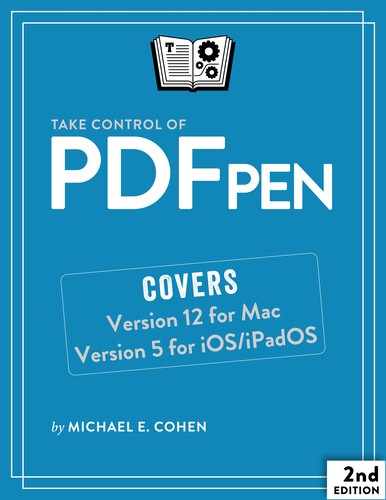Introduction
My office is something of a Vault of Antiquity. To the left of my desk is an old three-drawer metal file cabinet bursting with paper documents, many of them typed long before the advent of word processing technology. Another desk has drawers full of floppy disks and data cartridges dating back to the dawn of personal computing. (I even have a box of punch cards in the closet.)
As far as the paper files are concerned, they remain as easy to read as the day they were typed; their major drawback is they take up so much storage space for so little data. And if I did want them in digital form, I could easily scan and OCR them with PDFpen (in this book I explain how—in fact, one of those typed relics makes a guest appearance).
The documents stored on my floppy disks and data cartridges are another matter. Even if I could MacGyver together some hardware combination to access their contents on my Mac, most of the documents stored on these artifacts of another age are in obsolete formats that render them almost completely indecipherable.
There is one exception: the PDF documents on my antique storage media. If I could get those on my Mac, they likely would be as readable as the day they were created. After all, one of the main selling points of PDF is that the format was designed to be readable across platforms and almost impervious to the ravages of time. And that’s great.
Unless, that is, you want to edit your PDFs or reuse their contents. PDF was not designed for that.
And that’s where PDFpen comes in. The PDFpen family of apps can open and edit nearly any PDF you throw at it with ease, and can even export its contents into modern word processing formats. If a PDF is like a locked museum display case of content labeled “Look but don’t touch,” PDFpen is your set of lock picks.
The following pages explain how to use them.
